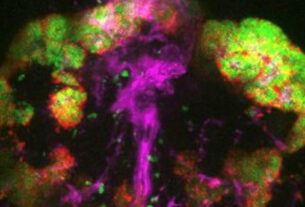Despite the common expression “crocodile tears” that means a “phony display of emotion,” mice and rats are the only animals that release tears.
According to Italian researchers who studied rodent tears three years ago, male mice tears turn female mice on with a specific protein that acts as an aphrodisiac to the females, making them more receptive to sex.
Scientists at Prof. Noam Sobel’s Brain Sciences Institute in Rehovot’s Weizmann Institute of Science went further, looking into the possibility that emotional tears in the eyes of women have a chemical effect on men. They have just published research in the journal PLOS Biology showing that tears in women’s eyes contain substances that block aggression in men.
The findings of the study
The study, entitled “A chemical signal in human female tears lowers aggression in males” – led by doctoral student Shani Agron in the olfaction research group – proved that sniffing tears leads to reduced brain activity related to aggression that results in less aggressive behavior. She was assisted by colleagues at Duke University in North Carolina.
Aggression by male rodents is known to be blocked when they smell female rodents’ tears. This is an example of social chemosignaling, a process that is common in animals but less understood in humans.
Human female tears are known to contain a perceptually odorless chemical signal that when sniffed, lowers testosterone in human males, but the behavioral significance of this effect remains poorly understood, they wrote.
“More specifically, one study found that sniffing tears drove a small but significant reduction in ratings of sexual arousal attributed to pictures, and the second study observed that despite significantly lowering testosterone, sniffing tears did not affect appetite. Given that reduced male testosterone is associated with reduced male aggression, we set out to test the hypothesis that like in rodents, human tears contain a chemical signal that blocks aggression,” they continued.
The Rehovot researchers exposed a group of men to either women’s emotional tears or saline (salt-water solution) while they played a two-person game. They harvested emotional tears from six women aged 22 to 25. The game was designed to elicit aggressive behavior against the other player whom the men were led to believe was cheating.
When given the opportunity, the men could get revenge on the other player by causing them to lose money. The men did not know what they were sniffing and couldn’t distinguish between the tears or the saline, which were both odorless.
Drastic drop in aggressive behavior
Revenge-seeking aggressive behavior during the game dropped more than 40% after the men sniffed women’s emotional tears.
When repeated in an MRI scanner, functional imaging showed two aggression-related brain regions – the prefrontal cortex and anterior insula – that became more active when the men were provoked during the game but did not become as active in the same situations when the men were sniffing the tears.
Individually, the greater the difference in this brain activity, the less often the player took revenge during the game.
Finding this link among tears, brain activity, and aggressive behavior implies that social chemosignaling is a factor in human aggression, not simply a scientific curiosity in animals, the researchers concluded.
“We found that just like in mice, human tears contain a chemical signal that blocks nonspecific male aggression. This goes against the notion that emotional tears are uniquely human.”




